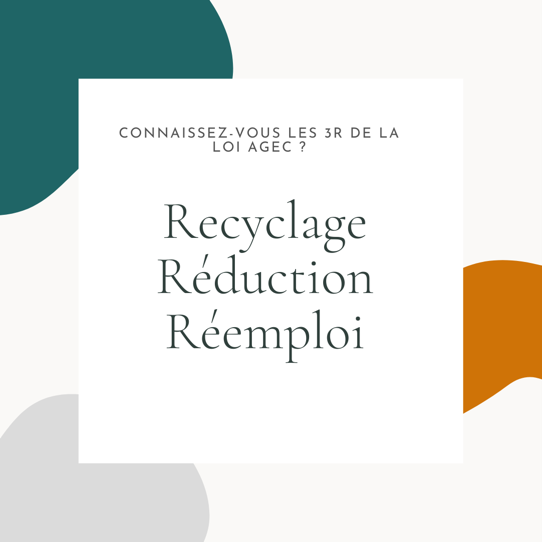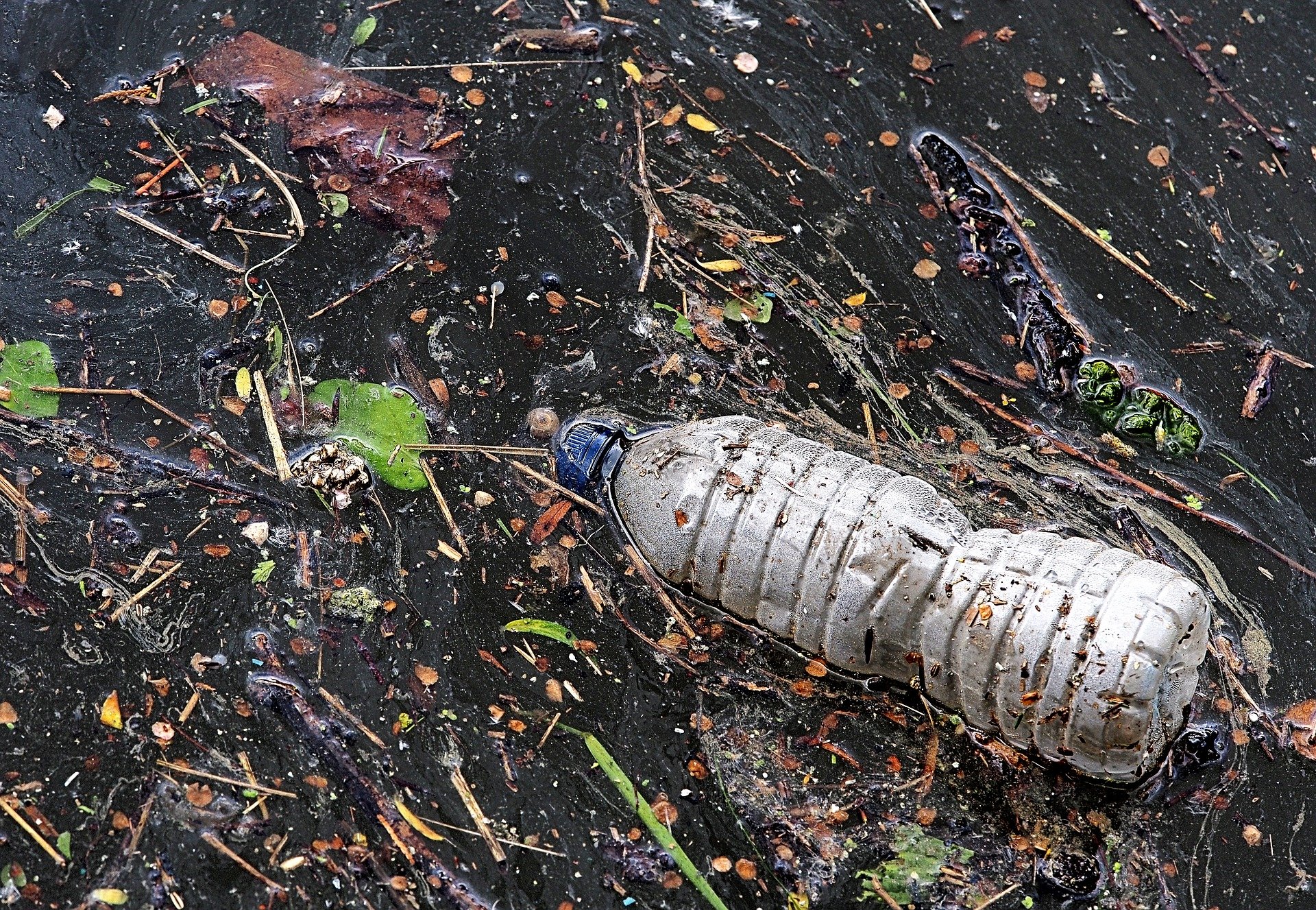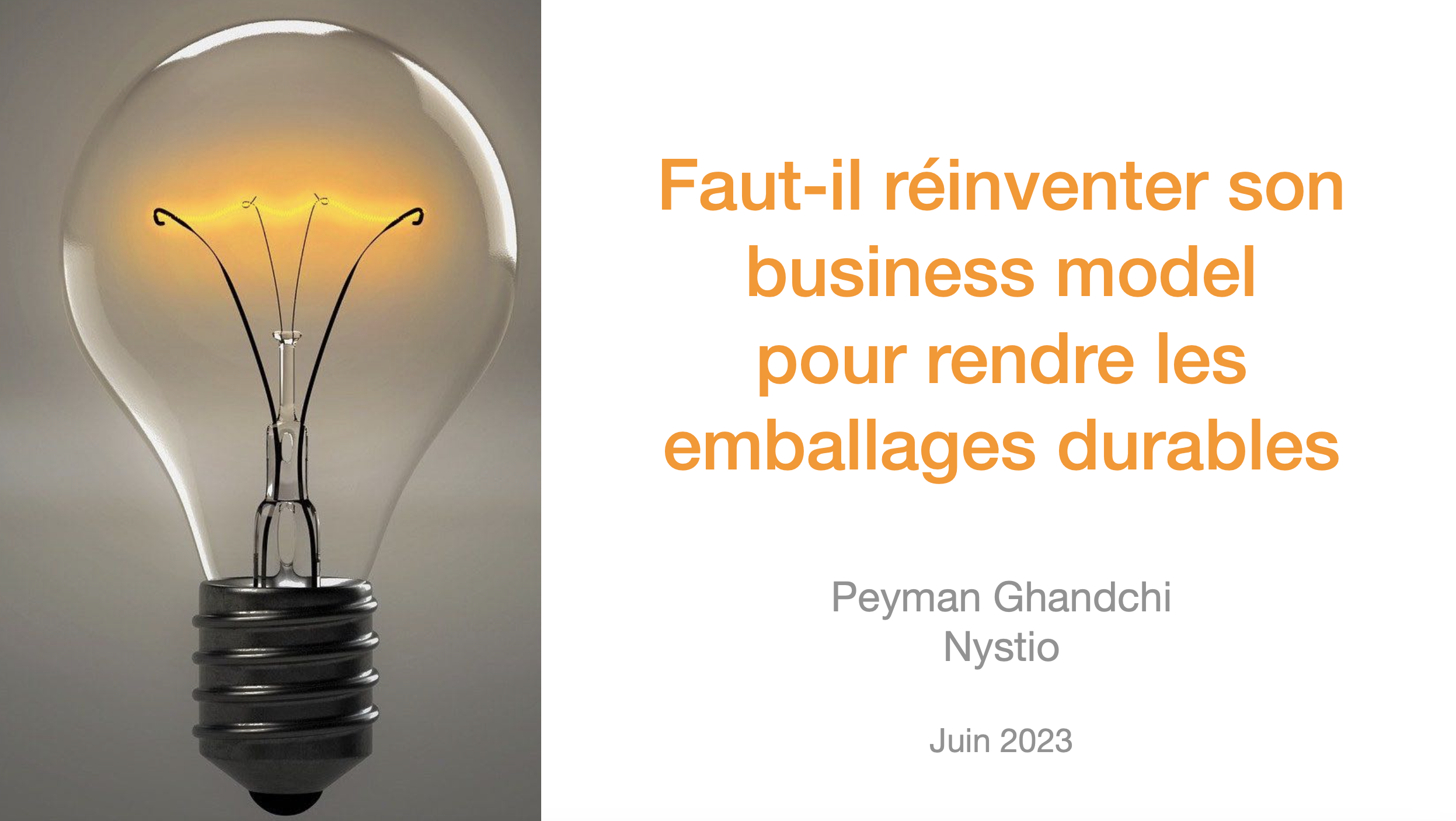What is a recyclable / recycled material ?
It’s always useful to start by defining what is understood by recyclable and recycled.
A recyclable material is one that has the property of being
According to the US Environmental Protection Agency, Recycling is the process of collecting and processing materials that would otherwise be thrown away as trash and turning them into new products[2].
The French Agency for Environmental development (ADEME) gives perhaps a more accurate definition of recycling.
The UK Environment agency also brings a more precise definition of recycling[3] : any recovery operation by which waste materials are reprocessed into products, materials or substances whether for the original or other purposes. It includes the reprocessing of organic material but does not include energy recovery and the reprocessing into materials that are to be used as fuels or for backfilling operations.
The recycling thus refers to waste management. So for a material or packaging to be benefit from the recycling concept, it needs to be classified as waste.
The second point is that it doesn’t matter how you process the material or packaging. It could be mechanically, chemically or biologically processed.
Thirdly, by recycling either the new material recovers properties equivalent to the original material or new properties will be generated.
So, a recyclable material is one that can benefit from a recovery operation and reprocessed into something similar or different. In the packaging industry, in the majority of the cases, recycling refers to the former option. As such, a lot of efforts go into recovering a PET into …PET, a PP into PP etc.
A recycled material is the one that has gone through the process of recovery according to the recycling definition.
As such, it appears clear that a recycled material is necessarily recyclable, but a recyclable material is not necessarily recycled.
Without explicitly using these definitions, we have all been using recyclable and recycled materials : glass and beverage cans are great examples of them. Cartons and boards are also part of this category. When it comes to the plastic world, the famous PET used by the water and beverage industries is the most well known recyclable and recycled plastic.
There are some others, but often the bottleneck is on the availability of recyclability infrastructure, thus limiting the ability of these plastics to be recycled.
How recyclable / recycled material contribute to a circular economy ?
The nature of the linear economy implies that materials and packaging are not meant to be recovered post consumption. There’s no return back to the value chain. As such, this model relies on the use so called virgin materials.
This model generates 2 issues. The first one is that the economy is intimately linked to the exploitation of fossile resources, which are not recyclable in a reasonable timeframe. The second issue is that the end of life is disconnected from any value creation.
So recovering waste in order to re-inject back into the value chain allows to address the 2 problems in one hit. Although there’s currently a lack of maturity to rely exclusively on the waste recovery as a source of material, a balance needs to be found.
From an economic standpoint, the The market size of plastic food waste is estimated circa 39 Bn USD[4], when the total market of food plastic is 10 folds higher.
So why recyclable and recycled materials are not further developed and used then?
There are several reasons that account for limited use of recyclable and recycled materials. However according to whether you consider recyclable or recycled, the answer would be different.
When it comes to the recycled content, this implies that the material be readily recyclable, as seen previously, and that the recycling infrastructure, including collect and processing, generate enough material.
In 2016, Europe produced 60 million tonnes of plastics. 50% of this was collected. 28% of the collected plastic were recycled. Reported to the total plastic produced, this represents 14% recycling[5].
Demand for recycled plastics accounts for only around 6 % of plastics demand in Europe[6]. In recent years, the EU plastic recycling sector has suffered from low commodity prices and uncertainties about market outlets. Investments in new plastic recycling capacity have been held back by the sector’s prospects of low profitability.
On the other hand, the willingness to move to recyclable / recycled content packaging is often based on a like for like approach replacing a non recyclable material by a recyclable one, as a first step, and then a gradual increase in the recycled content. But very quickly companies realise that the reality is more complicated than expected. Packaging don’t show the same performance, whether from a customer / consumer standpoint or manufacturing wise.
In practice, a more thought through approach is required. One way to do so is based on the 3 step approach defined below.
What variables are important to take into account ?
A move to a recyclable / recycled material not only requires material related technical input, but also important supply chain considerations. The latter shouldn’t be underestimated as they can drastically influence the feasibility and success of the transition. Indeed, whilst come companies have dedicated manufacturing sites for a given country, some other for instance, produce for a region (multi-country). If recycling regulations are not equivalent across countries, the same product needs then to be packed in different materials, which in return adds complexity The Suppy chain dilemma needs to take into account the following points :
- Dedicated versus flexibility of manufacturing lines by packaging or SKU
- Manufacturing hubs organised by country, region, or global supply
- Impact of country regulations on regional / global supply
3 step operational approach towards the implementation of recyclable / recycled materials
- Consider recyclable and recycled materials through the eco-design lens
When designing a new recyclable or recycled content packaging or material, the end of life needs to be integrated into the design phase from the early stage. It’s absolutely crucial to understand how the packaging or the material will be handled post consumption, how easily it could be separated into different sub-materials for which collection, sorting and recycling processes are available and efficient in generated a recycled product. It goes without saying the eco-design activity should remain customer / consumer / user / shopper centric. Benefits offered by the packaging or the material should remain in place while moving into a recyclable or recycled content packaging / materials.
- Simplify your specifications
The leaner the specification, the easier the post consumption handling. Simplification is a multi-dimension parameter. It’s both about the simplification of the number of materials used in the bill of materials, without compromising the quality, safety and functionality of the packaging, the simplification of each of the material specifications used (example from a multi-material to a mono-material).
- Take into account the machinability and scaleability constraints
A material that can’t run with the right output or line efficiency, or is hardly scaleable to higher speeds under your manufacturing conditions will inevitably lead to extra complexity and potential waste generation. It’s always a debate whether a material should be designed for a manufacturing line or the line should be flexible enough to « absorb » a material, at the end of the day, there shouldn’t be disruption in manufacturing conditions.
[1] By 2030, substantially reduce waste generation through prevention, reduction, recycling and reuse. https://sdgs.un.org/fr/goals/goal12
[2] https://www.epa.gov/recycle/recycling-basics
[3] https://assets.publishing.service.gov.uk/government/uploads/system/uploads/attachment_data/file/69590/pb13813-waste-legal-def-guide.pdf
[4] Frost & Sullivan, Globlal waste recycling and circular economy market outlook 2019, June 2019
[5] Miller, S.; Bolger, M.; and Copello, L. (2019). Reusable solutions: how governments can help stop single use plastic pollution. 3Keel, Oxford, United Kingdom. A study by the Rethink Plastic Alliance and the Break Free From Plastic Movement. Retrieved from https://rethinkplasticalliance.eu/ wp-content/uploads/2019/10/bffp_rpa_reusable_solutions_report.pdf
[6] https://ec.europa.eu/environment/circular-economy/pdf/plastics-strategy-brochure.pdf










